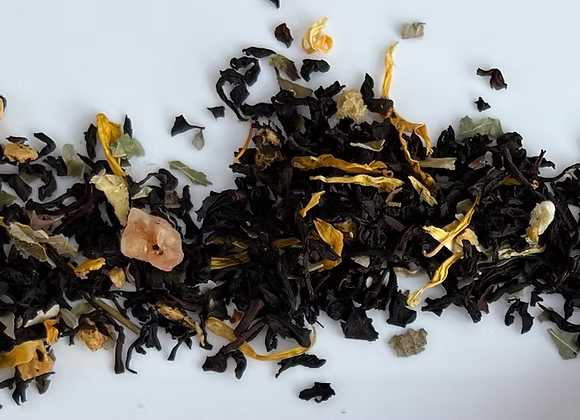BLACK
Black tea is known for its robust and bold flavors, often featuring a full-bodied taste with notes that can range from malty and fruity to floral and smoky, depending on the specific type and origin of the tea. It is a popular beverage consumed worldwide and can be enjoyed plain or with milk, sugar, or other additives based on individual preferences. Some well-known types of black tea include Assam, Darjeeling, Ceylon, and English Breakfast tea, among others.
GREEN
Green tea is popular worldwide and has a long history, particularly in East Asian countries like China, Japan, and Korea. It is known for its numerous health benefits due to its rich content of antioxidants, particularly catechins like epigallocatechin gallate (EGCG). These antioxidants are believed to have various health-promoting properties, such as boosting metabolism, supporting cardiovascular health, and potentially reducing the risk of certain diseases.
The flavor of green tea can vary widely, depending on factors such as the specific tea plant cultivar, growing conditions, and processing methods. Some common types of green tea include Sencha (Japan), Longjing (China), and Gunpowder (China).
Green tea is often enjoyed on its own as a hot or cold beverage, and it can also be used as an ingredient in various recipes, including desserts, smoothies, and even savory dishes.
WHITE
White tea has a subtle and delicate flavor profile, often described as floral, sweet, and slightly grassy. Since it undergoes less processing, it typically contains lower caffeine content compared to black or green tea.
There are different varieties of white tea, and some well-known types include Silver Needle (Baihao Yinzhen) and White Peony (Bai Mudan). White tea has gained popularity in recent years due to its potential health benefits and unique taste, making it a sought-after choice among tea enthusiasts.
OOLONG
Oolong tea is a type of traditional Chinese tea that occupies a unique place between green tea and black tea. It is known for its distinct flavor profile and the process of partial oxidation that sets it apart from other types of tea.
Oolong tea is made from the leaves of the Camellia Sinensis plant, the same plant used to produce green, black, and white teas. The key difference is in the processing. Oolong tea leaves are partially oxidized, which means they are allowed to wither and oxidize to varying degrees before they are heat-treated to stop the oxidation process. The level of oxidation can range from 10% to 70%, resulting in a wide range of flavors and aromas.
There are many varieties of oolong tea, and they are often named after the region in which they are grown. Some famous oolong teas include Tie Guan Yin (Iron Goddess of Mercy), Da Hong Pao (Big Red Robe), and Dong Ding, among others.
Oolong tea has a rich cultural history in China and Taiwan, where it is often enjoyed during traditional tea ceremonies. It is also popular in other parts of the world and has gained recognition for its unique flavors.
PUER
Puer tea, also known as pu-erh tea, is a type of fermented tea that originates from the Yunnan province in China. It is named after the town of Pu'er, which was an important trading post for tea during ancient times.
Raw Puer (Sheng Puer) is made from sun-dried tea leaves that undergo a natural fermentation process over time. The leaves are plucked, withered, and then pan-fired or sun-dried to stop oxidation. After this initial processing, the tea is compressed into various shapes, such as cakes, bricks, or tuo cha (bird's nest-shaped). The raw puer tea then continues to age, gradually developing its flavor and complexity over the years. Some raw puer teas can be aged for decades and are highly sought after by tea enthusiasts for their unique taste and aging potential.
Puer tea is renowned for its distinct aroma, flavor, and possible health benefits. Some common characteristics of puer tea include a deep, rich, and earthy taste with notes of moss, wood, and sometimes a hint of sweetness.
TISANE or HERBAL
A tisane, also known as herbal tea or herbal infusion, is a beverage made from steeping various parts of plants in hot water.
Tisanes have been consumed for centuries across different cultures for their medicinal and therapeutic properties. They can be soothing, calming, or invigorating, depending on the ingredients used. Some common herbs used in tisanes include chamomile, peppermint, hibiscus, rooibos, lemon balm, and ginger, among others.



0 comments